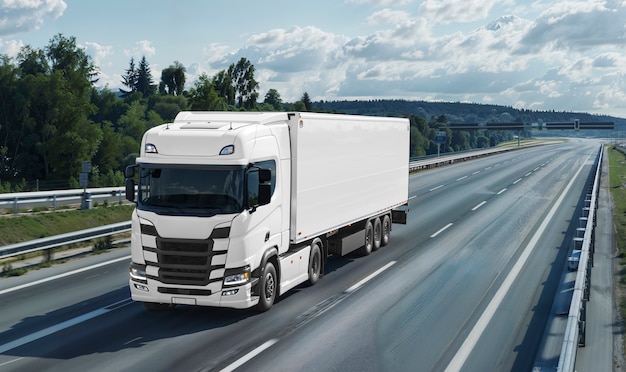When it comes to heavy haulage, the question of how much weight a truck can carry is not just a matter of numbers; it delves into the intricate balance of engineering, safety regulations, and the realities of the road. Imagine a massive 18-wheeler lumbering down the highway, muscles straining under the weight of its cargo.
But what determines the limits of these titans of transport? Is it solely the truck’s design, or are there hidden factors at play, such as state laws, road conditions, and even the weight distribution of the load? In this exploration, we’ll unpack the complexities of heavy haulage limits and reveal the often-overlooked nuances that shape the trucking industry’s capabilities. From freight regulations to technological advancements in vehicle design, join us as we navigate the heavy-duty world of trucking and uncover just how much weight these machines can truly carry.
Types of Trucks and Their Weight Capacities

When considering the diverse world of trucks and their weight capacities, it’s essential to recognize the variety of designs tailored for specific hauling tasks. From light-duty pickups that gracefully transport everyday cargo, boasting capacities of around 2,000 to 3,000 pounds, to formidable heavy-duty rigs like tractor-trailers that can carry upwards of 80,000 pounds on public highways, the spectrum is vast.
Specialized vehicles such as flatbeds, dump trucks, and tow trucks further complicate this landscape, each engineered for unique purposes. For instance, a robust dump truck, often employed in construction, typically carries loads between 10,000 to 30,000 pounds, while a lowboy trailer specializes in transporting heavy machinery, sometimes exceeding 40,000 pounds.
Understanding these distinctions is vital for anyone navigating the world of heavy haulage, as it lays the groundwork for safe and efficient transportation. Whether youre a logistics manager or a weekend warrior moving furniture, the choice of truck significantly influences both weight limits and operational capability.
Factors Influencing Carrying Capacity
Several critical factors significantly influence a trucks carrying capacity, shaping what it can legally and safely transport. First and foremost is the trucks design and specifications—its chassis, axle configuration, and suspension system play pivotal roles in determining how much weight it can bear.
Next, the material of the load itself matters; the density and form of the cargo can lead to variations in how weight is distributed, which affects stability on the road. Furthermore, legal regulations set forth by governing bodies dictate maximum weight limits, often imposing strict guidelines that truck operators must adhere to to ensure safety and compliance.
Weather conditions, road quality, and even the driving techniques employed can further influence a truck’s performance under load, making it imperative for operators to be acutely aware of their environment. All these elements weave together a complex tapestry that defines the true limits of heavy haulage, underscoring the necessity for balance between capacity, safety, and regulatory obligations.
Future Trends in Heavy Haulage

As the heavy haulage industry gears up for the future, innovations on the horizon promise to revolutionize how we transport massive loads. With advancements in technology, from electrification of heavy-duty trucks to the integration of smart logistics solutions, the potential to optimize load capacities while minimizing environmental impact is clearer than ever.
Enhanced materials are being developed, allowing for lighter, stronger trailers capable of carrying heavier weights without compromising safety. Furthermore, the rise of autonomous vehicles could streamline operations, increasing efficiency while reducing human error.
This evolution will not only redefine the standards for what trucks can carry but also reshape the very infrastructure that supports heavy haulage, emphasizing sustainability and adaptability in a rapidly changing world. As we look forward, the heavy haulage landscape will increasingly blend tradition with cutting-edge innovation, setting the stage for a new era of transportation capabilities.
Conclusion
In conclusion, understanding the weight limits and regulations surrounding heavy haulage is crucial for both operators and businesses that rely on transporting large loads. With a variety of factors influencing capacity—from the trucks design to legal restrictions—its essential to be informed about these parameters to ensure safety and compliance on the road.
Particularly in regions like heavy haulage Brisbane, where freight demands are high, adherence to these guidelines not only supports operational efficiency but also fosters responsible transportation practices. As the industry continues to evolve, staying updated on weight limits will be key to optimizing logistics and minimizing risks associated with heavy haulage.




